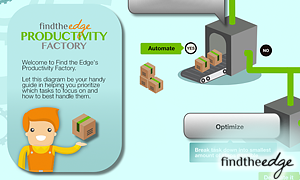 When considering procurement strategies, the idea of splitting operational and strategic buyers sounds promising at first, but in practice it's often a recipe for disaster. Let me explain why.
When considering procurement strategies, the idea of splitting operational and strategic buyers sounds promising at first, but in practice it's often a recipe for disaster. Let me explain why.
I recently worked with a client in the service industry, who was looking to change the structure of his Procurement team. The initial idea was to separate the buyer into two roles:
- Operational Buyer – Would manage any P2P processes, and offer help and support to stakeholders on any challenges they came across on a daily basis.
- Strategic Buyer – Would have a range of responsibilities, including devising and implementing sourcing/category strategies, arranging framework agreements, generating cost reductions, and working to improve value across the company.
The strategic buyers would leave the implementation of category strategy to the operational buyer.
The thinking behind this was that if the roles were defined and separated in this way, the company's employees would have extra capacity to take on more strategic work, without having to worry about any other operational ‘noise'.
This debate frequently pops its head up in the procurement arena, and at the time I was far from convinced. It is worth discussing, however.
Many procurement leaders find the idea intriguing, and consider using it to try and revolutionise performance.
Of course, it makes sense to look for a method that allows extra work to be completed, and sees the company create more supply chain value. It can also not be doubted that many organisations are unable to dedicate enough resources towards strategy work of a higher quality.This can result in category strategies that are rushed and weak.
In theory, the split roles method would see the operational buyers spending their energy on putting pre-negotiated agreements and contracts into action, and calling-off from framework agreements. The strategic buyers – on the other hand – would be freed from these tasks, enabling them to focus on the more invigorating parts of the role, like sourcing and negotiation.Under this system, everything would seemingly be well… or would it?If you're clued up on systems thinking, you'll probably have come across what's known as ‘failure demand' before.
To put it simply, this is when increased work is generated by the need to redo work that wasn't completed successfully initially.
The typical example of this is a call centre that is under strain dealing with enquiries from customers. To combat this, the company increases manpower, and labels all calls as ‘work' – despite the fact some calls are customer enquiries, and others sales enquiries.
There is a clear difference between these two types of call, as only sales calls are designed to generate new business. An increase in enquiries sees the company wasting time and money dealing with calls that have come about because of a service failure – instead of dealing with new enquiries that will generate profits.
It's believed that around 40% of calls the average centre deals with would fall under the category ‘failure demand'.
Call centre owners have to focus on creating a service which eliminates any failure demand automatically, and prevents it from happening in the first place.
Back to Procurement
So, we've distinguished the roles of strategic and operational buyers.
It's likely that these groups will be located away from one another, with the strategic buyers very central, and the operational ones in close proximity to certain service users or operations.
They also probably report to different managers.
The period that follows the creation of this type of structure is usually fairly problem free, with everyone understanding what they are responsible for.
Sadly, this feeling of calm rarely lasts. If a supplier is unable to perform to targets, for example, or stick to a delivery schedule, what happens next?It then needs to be decided whether the issue was caused by the lead-time that was settled for, (operational buyer's responsibility), or the supplier being unable to designate the necessary amount of resources – because of the commercial terms the strategic buyer negotiated.
It's clear to see that it can be difficult to identify the problem. That's without considering actually getting the product/service delivered, and failures that can occur in this area.
If the service quality also drops as a result, the number of issues requiring extra attention to resolve – and the number of people needed for this – begin to climb steadily. This is how failure demand can affect the process, and lead to excessive waste.
A while back, I was in charge of organising Procurement within an organisation where these problems occurred on a daily basis.
In the beginning, a good 20-25% of all team activity would be caused by internal disputes between the two teams. Management also had to expend time and energy stepping in.
The failure demand at this organisation impacted on everyone, especially when combined with the problems that breakdown of the supply chain causes.
To resolve this, it was necessary to bring the teams together, and assign them with process improvement team members. It was their job to focus on improving processes for quality, cost and delivery.
The teams were then given the resources they needed, and allowed to see to the job in hand their own way.
The teams saw the failure demand problems within the organisation largely disappear. Category and relationship strategies were put into place, and the daily issues that had taken so much time to resolve were quickly and easily solved – without the need for slanging matches or management involvement.
This small change to the structure of the organisation saw performance strengthen dramatically, the organisation deliver more than 20% cost savings, record a 25% operating budget reduction, and supplier delivery performance improve tenfold. There was also a huge reduction in product-quality related incidents, and all this was achieved in just three years.
Summary
It's my own belief that we will soon see trained service and product users managing P2P processes, instead of buyers. They will be helped in this by procurement systems that are user friendly.
These developments will see much smaller ‘professional' Procurement teams that conduct the ‘trusted commercial advisor' tasks and the strategic work.
Meanwhile, I would advise Procurement leaders to avoid looking for easy solutions through organisational shakeups, and avoid separating the buyer roles. Instead, I would suggest focussing efforts on boosting the development of day-to-day activity to stakeholders.
It’s then possible to work on strategic aims, while being wary of any failure demand that may occur between Procurement and its stakeholders.
Working seamlessly within, and between, Procurement and the business is undoubtedly the future.





